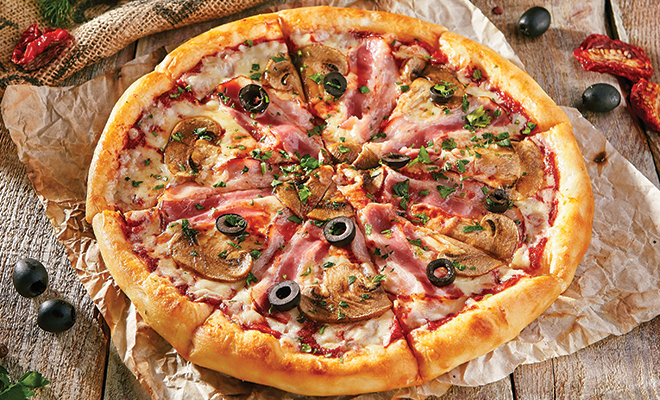
Cook Like a Professional
One of the first food lessons we learn is about flavor. Kids love sweets–candy, cookies, ice cream, sugary drinks. But vegetables, like broccoli? Not so much. These preferences may be a survival tool of sorts.
Whole foods that taste sweet are digested in a way that provides quick energy. Other whole foods that have a bitter flavor can contain alkaloids, and some alkaloids are poisonous. It may be that our love of sweets has developed since the dawn of humankind as we learned to discern the value of food because of its flavor.
Even the pickiest of eaters can expand their knowledge of flavor by tasting new and different foods. We have all known an “aha!” moment of discovery, realizing that some foods become more appealing when combined with another. Eggs are transformed when served up as French toast, with butter and syrup. Veggies such as broccoli and cauliflower are tastier when topped with creamy melted cheese.
We also develop preferences for whether dishes are best served hot or cold. For example, a hot pizza pie is rich in flavorful ingredients. Acidic tomato sauce simmers with sweet herbs like basil; the bubbling goodness of browned cheese makes each bite memorable. Salty olive slices and meaty flavors of pepperoni and sausage bring it all together.Yet some people take the greatest joy in having a breakfast of leftover pizza–cold. A chilled slice of pizza has a totally different aroma and texture than a hot slice. Cold fried chicken, cold meatloaf sandwiches and cold sliced beets are favorite foods for some, while others would never think of these as anything but hot dishes.
But the only way to discover new flavor profiles is by keeping an open culinary mind. Just as we learn more about our tastes in music by listening and in literature by reading, the best way to develop your palate is by cooking and tasting. This includes balancing sweet, sour, salty and bitter ingredients with other flavor factors: spiciness (the hot kind, such as jalapeños and hot sauce) and the elusive umami (a Japanese concept that means “yummy”). Foods that fall into the umami category add a depth of flavor that is hard to define, such as anchovies, soy sauce, hard cheese, tomatoes, potatoes, mushrooms and meats.
To better understand umami, let’s go back to our hot pizza pie. The acidic tomato sauce and the browned cheese provide umami, as do proteins such as pepperoni or anchovies. These qualities of umami, combined with the aromatics of onions, herbs and spices, round out the flavor profile.
How do home cooks go outside their comfort zone to learn about new flavors? I sought the advice of Chef Marwan Chebaro, a co-founder of Falafill restaurants in Chicago that feature fresh, healthy, flavorful Mediterranean food. When I asked Chef Marwan how he trained his staff to develop a sense of flavors, his answer was simple: tabouleh. “I train my staff by setting out all the ingredients to make tabouleh: bulgur, olive oil, parsley, tomatoes, lemon juice, salt, pepper. There is no recipe; I tell them, ‘You know how this should taste, so go ahead and tell me when you think you’ve finished.’ When that first batch is made, we taste it. I ask if they’re happy with it; would they serve this to our customers? The reply is always, ‘Yes, it’s fine.’ I set aside that first batch, and tell them to try again–using MORE of everything to add flavor. They eventually make several batches of tabouleh before producing the final version that I approve. Then, I bring back that original first batch that was set aside, the one they thought was good. I tell them to taste it again. Every single time, their jaw drops, and they say ‘I would never serve this, it’s awful!’ The difference in flavor between the first batch and the final version is very pronounced. Yet they were totally satisfied with that first batch.”
Chef Marwan also shared that most dishes either lack enough ingredients that provide “high notes” or have the ratio of flavors out of balance. Try test-driving new flavors in a bland dish, such as scrambled eggs or sautéed mushrooms. And remember Chef Marwan’s advice: be assertive, using different ratios of ingredients to balance out flavors. ■
Sources: chicagotribune.com and cooksmarts.com.
The following flavors may provide some inspiration in developing your culinary creativity.
– Sweet: Allspice, basil, cardamom, cinnamon, honey, molasses, sugar
– Sour/Tangy: Citrus juice, tomato paste, vinegars, yogurt
– Bitter: Bay leaves, beer, cocoa, coffee, grapefruit, kale, radicchio, turmeric
– Spicy/Hot: Arugula, Ancho chile, Bloody Mary mix, cayenne pepper, curry powder, Dijon mustard, horseradish, jalapeños, wasabi
-Salty/Umami: Anchovies/anchovy paste, capers, cured meats, sea salt, hard
cheese, fish sauce, pickled vegetables, soy sauce, Worcestershire sauce







